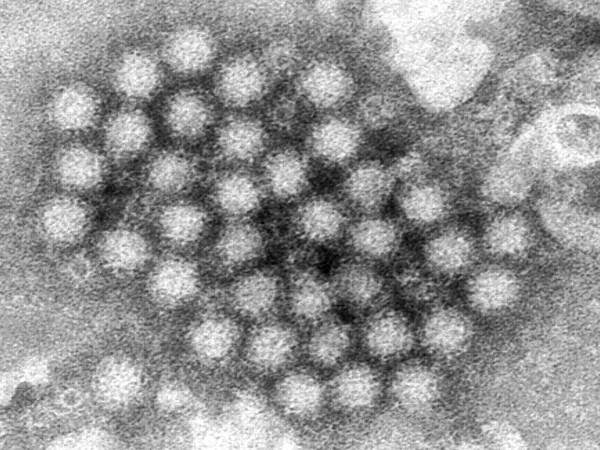
Norovirus Outbreak Surges in the U.S.: Here’s What You Must Know!
2024-12-31
Author: Nur
Norovirus cases are soaring across the United States this winter, with health experts sounding the alarm about what is colloquially known as the “winter vomiting bug.” This highly contagious virus spreads through contaminated surfaces, food and water, and direct contact with infected individuals. Here's a comprehensive overview of norovirus, its transmission, and the latest outbreak information.
Understanding Norovirus
Norovirus accounts for a staggering 58% of food-borne illnesses in the U.S. It was first identified in Norwalk, Ohio, in the 1970s and is part of the Caliciviridae family of small RNA viruses, affecting humans and various animals. Notably, norovirus outbreaks peak between November and April, a period widely referred to as “norovirus season.”
How Norovirus Spreads
The transmission of norovirus is alarmingly rapid and can occur in several ways:
- Touching contaminated surfaces and then touching the mouth, nose, or eyes.
- Consuming food or drinks touched by an infected person or contaminated by virus particles.
- Closely sharing utensils or food, especially in crowded areas like cruise ships and restaurants.
Norovirus can survive on different surfaces, whether hard or soft, for up to two weeks, making it particularly challenging to control its spread.
Is Norovirus Airborne?
Although norovirus is not airborne in the same way as influenza or COVID-19, it can become aerosolized during instances of vomiting, allowing tiny droplets to potentially infect others if inhaled. Outbreaks are notably common in crowded environments, with recent reports indicating three separate cruise ship outbreaks in Hawaii and the Caribbean that sickened a total of 301 passengers—an unprecedented number for a single month.
Are Oysters Safe to Eat?
Raw or undercooked shellfish, notably oysters, are notorious for harboring norovirus. Oysters filter-feed by straining food from large volumes of water, which can introduce contaminants into their system. In 2022, a multistate outbreak in the U.S. was linked to raw oysters from Texas. This winter, the FDA issued advisories on oyster consumption from specific companies in British Columbia due to possible contamination, emphasizing that while oysters are a risk factor, at least 80% of norovirus cases stem from person-to-person contact.
The Current Outbreak Situation
This winter marks a notable surge in norovirus cases in the U.S. According to data from the CDC, confirmed outbreaks escalated from 69 in late November to 91 by the first week of December. Minnesota's Department of Health reported 40 confirmed cases in December, double the typical numbers for that month. This spike is partially attributed to the rise of a new strain, GII.17, which has become prevalent.
Symptoms of Norovirus
Symptoms typically manifest between 12-24 hours post-exposure, but can appear as early as 10 hours. These include:
- Severe vomiting
- Diarrhea
- Nausea
- Abdominal pain
- Possible fever
- Body aches and headaches
Dehydration is a critical concern, especially for young children and older adults. Signs of dehydration include a dry mouth, reduced urination, dizziness, and excessive sleepiness in children. Most individuals recover within a few days, but vigilance is key.
Treating Norovirus
There is no specific treatment for norovirus—symptoms must run their course. The focus lies on hydration; drinking plenty of fluids or oral rehydration solutions is vital. Caffeine and alcohol should be avoided, as they can aggravate dehydration. In severe cases, medical intervention for intravenous fluids may be necessary.
Prevention Tips
The CDC recommends several strategies to prevent norovirus infections:
1. **Wash Hands Thoroughly:** Soap and water are most effective, especially after using the bathroom and before handling or consuming food.
2. **Disinfect Surfaces:** Regularly clean high-touch areas with disinfectants.
3. **Avoid Preparing Food for Others if Sick:** Stay home if you exhibit symptoms.
4. **Handle Food Safely:** Cook seafood thoroughly and wash fruits and vegetables before consumption.
Conclusion
With norovirus cases rising, increased awareness and vigilance are essential in protecting yourself and others. Understanding how the virus spreads and practicing diligent hygiene can significantly reduce your risk of infection. Stay safe and stay informed!
 Brasil (PT)
Brasil (PT)
 Canada (EN)
Canada (EN)
 Chile (ES)
Chile (ES)
 Česko (CS)
Česko (CS)
 대한민국 (KO)
대한민국 (KO)
 España (ES)
España (ES)
 France (FR)
France (FR)
 Hong Kong (EN)
Hong Kong (EN)
 Italia (IT)
Italia (IT)
 日本 (JA)
日本 (JA)
 Magyarország (HU)
Magyarország (HU)
 Norge (NO)
Norge (NO)
 Polska (PL)
Polska (PL)
 Schweiz (DE)
Schweiz (DE)
 Singapore (EN)
Singapore (EN)
 Sverige (SV)
Sverige (SV)
 Suomi (FI)
Suomi (FI)
 Türkiye (TR)
Türkiye (TR)
 الإمارات العربية المتحدة (AR)
الإمارات العربية المتحدة (AR)